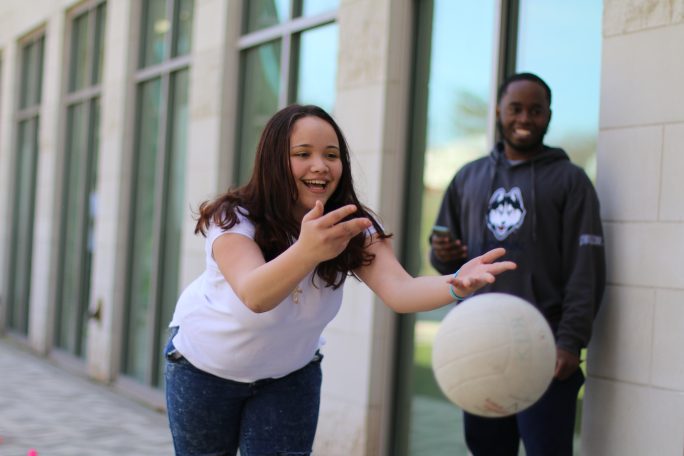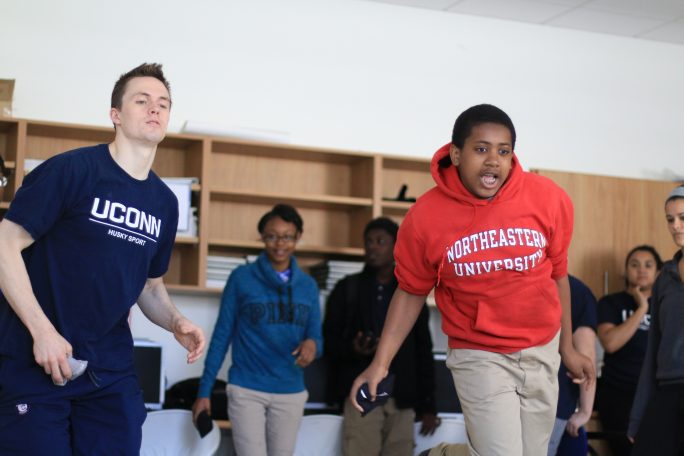Husky Sport employs the conceptual and practical components of the Sport Based Youth Development (SBYD) framework to inform stakeholder teaching and learning within a campus-community partnership. Working to provide a larger system of support for youth development and youth development practitioners, SBYD outlines an avenue for positive relationship building and collaborative network development amongst diverse community members (Sherry, Karg, & O’May, 2011; Smith & Westerbeck, 2007). With sport as an initial hook (Perkins & Noam, 2007) for shared participation in physical activity, Husky Sport programs and partnerships also engage curriculum focused on youth attainment of knowledge and application of healthy nutrition, transferable life skills, and academic enrichment.
In providing a structure for sustained engagement amongst youth participants and UConn students-volunteers, Husky Sport builds upon the power of sport to facilitate social exchanges between similar and dissimilar others, while investing in the process of developing of trust and loyalty amongst diverse participants. Once the foundations of positive relationships are in place, the integration of learning and individual development opportunities (Burnett, 2006; Sherry, 2010; Sherry & Strybosch, 2012; Tonts, 2005) can occur, often formally and informally before, during, or after structured SBYD programming (Schulenkorf et al., 2011).
The outcomes of Husky Sport’s SBYD efforts should reveal progress toward the following objectives:
- Increased self esteem/self worth as the participants gained interest, knowledge and improved their physical abilities
- Increased accountability/responsibility for self as part of a small program with considerable individual attention
- Increased connections to community/sense of belonging through working closely with mentors and peers
- Increased knowledge/acquisition of nutrition/physical activity/life skills/academic skills from the curriculum
- Application of those skills both within program and at home
- Active participation/recognizing one’s own influence on self/others through power-sharing
Find at www.up2us.org and additional citations: Bruening, Dover & Clark, 2009; Burnett, 2006; Sherry, 2010; Sherry & Strybosch, 2012; Tonts, 2005; Sherry, Karg, & O’May, 2011; Smith & Westerbeck, 2007; Perkins & Noam, 2007; Pittman, et al., 2002; Schulenkorf et al., 2011; National Institute on Out-of-School Time at Wellesley College Center for Research on Women, Harvard Family Research Project After School Program Quality Assessment Categories of Standards, DC Standards for Out-of-School Time, The Community Network for Youth Development’s Youth Development Framework for Practice, Team Up For Youth’s Building Blocks for Quality Youth Sports.




